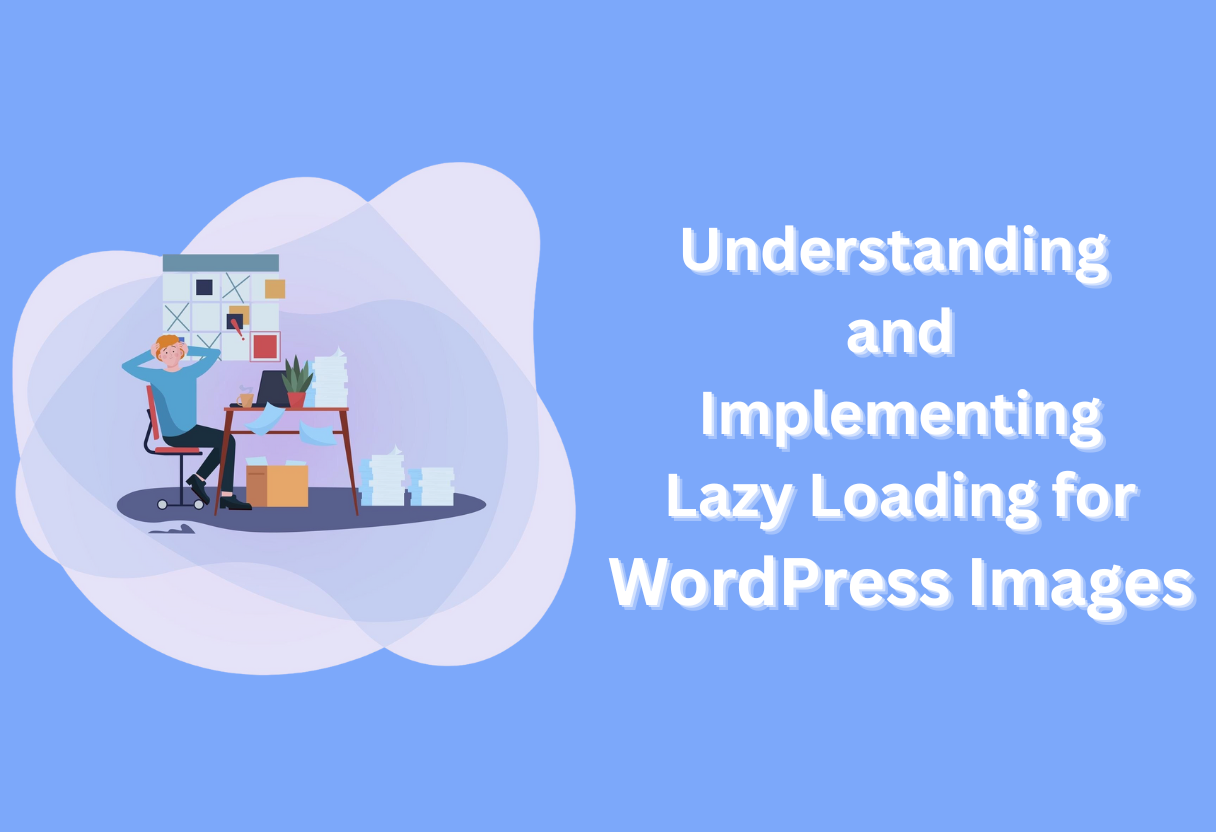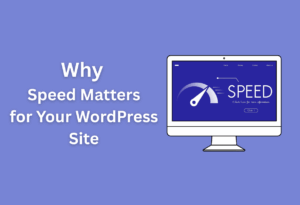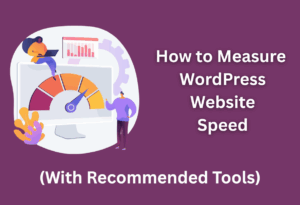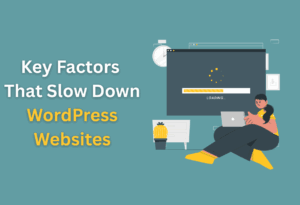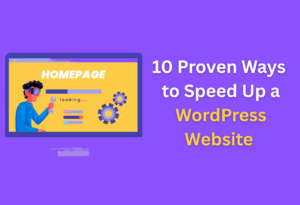WordPress has become synonymous with easy website creation, but managing your site’s performance can be a challenge, especially when it comes to images. One effective technique to enhance loading speeds is lazy loading, a strategy that defers the loading of images until they are in the viewer’s viewport. In this post, you’ll learn how lazy loading works, why it’s beneficial for your WordPress site, and step-by-step instructions on how to implement it. By optimizing your images, you can significantly improve user experience, site speed, and SEO performance.
Understanding Lazy Loading
Your understanding of lazy loading is crucial for improving the performance of your WordPress site. This technique helps in optimizing how images and other media are loaded, ensuring that only the content visible in the viewer’s browser is downloaded initially. This not only speeds up the page loading time but also enhances user experience and decreases bandwidth usage.
Definition of Lazy Loading
Along with simplifying the loading process, lazy loading allows images and media to be loaded only when they enter the viewport of the user’s screen. This means that images lower on the page won’t load until the user scrolls down to where they are positioned, reducing the initial loading time.
Benefits of Lazy Loading for Websites
Alongside improving performance, lazy loading provides a range of benefits that greatly enhance user experience. By decreasing page load times, you can minimize bounce rates and increase engagement, making your website more effective overall.
Websites benefit from lazy loading as it turns their attention to responsive design and mobile optimization. Particularly for sites with numerous images or heavy media content, lazy loading can significantly cut down the initial load time, encouraging users to stay longer and explore your content. The improved loading speed can also positively impact your site’s search engine rankings, further boosting visibility.
How Lazy Loading Works
Understanding lazy loading involves recognizing how it strategically delays image and media loading until it is needed. This technique utilizes JavaScript to monitor the user’s scrolling behavior and only fetches images when they are about to appear on the screen.
Consequently, lazy loading keeps your website lightweight by not burdening it with the task of loading off-screen content upfront. This not only conserves resources but also ensures that your users have a smooth browsing experience, as they can interact with the visible content almost immediately. By implementing this approach, you invite users to enjoy faster navigation through your website while efficiently managing server load and bandwidth.
Importance of Lazy Loading for WordPress
Clearly, understanding the significance of lazy loading for your WordPress site can greatly enhance performance and user engagement. By implementing this technique, you not only improve loading times but also create a smoother browsing experience for your visitors. As your site’s speed and efficiency improve, you’ll likely see an increase in user satisfaction and interaction.
Impact on Page Load Speed
On implementing lazy loading, the initial paint of your webpages is significantly faster. This is because images and other media load only as users scroll down the page, reducing the number of resources downloaded at the onset. With faster page load speeds, your site can engage visitors more effectively, decreasing bounce rates.
Benefits for User Experience
Below are several advantages that lazy loading brings to user experience. When your site loads quickly and smoothly, visitors can navigate your content without delays or interruptions. This not only fosters a more pleasant browsing experience but also contributes to higher engagement rates, as users are more likely to consume your content when it’s readily accessible.
Speed is a vital component of user experience in today’s digital landscape. When your website loads efficiently through lazy loading, you reduce frustration and keep visitors engaged. Users are more likely to explore additional pages and interactive features, leading to longer session durations and increased likelihood of conversions.
SEO Considerations
Above all, implementing lazy loading can positively impact your search engine rankings. Search engines, like Google, prioritize sites that provide fast and responsive user experiences. A quicker load time not only improves user satisfaction but can also enhance your visibility in search results.
Even utilizing lazy loading can give you an advantage in optimizing your site for search engines. By reducing your overall page weight, you can improve your Core Web Vitals scores, which are vital metrics Google evaluates for performance. In turn, a stronger SEO profile can lead to increased organic traffic and better conversion rates for your business.
Implementing Lazy Loading in WordPress
Now that you understand the importance of lazy loading, it’s time to look at how to implement it in your WordPress site.
Native WordPress Lazy Loading Features
Across recent versions of WordPress, native lazy loading features have been integrated, allowing images to load only when they are in or near the viewport. This means you don’t have to add any plugin or code manually; simply updating to the latest WordPress version enables this feature automatically for image tags, enhancing your site’s loading speed.
Recommended Plugins for Lazy Loading
Lazy loading can be further enhanced by using dedicated plugins that optimize images and other elements on your site. These plugins often come with additional features such as customizable lazy loading settings, which means you can choose what to load lazily and what to keep as is.
Indeed, many popular WordPress plugins such as WP Rocket, Lazy Load by WP Rocket, and a3 Lazy Load offer user-friendly interfaces and robust settings to optimize your lazy loading experience. These plugins allow for seamless integration, ensuring you retain control over how your images and videos load, significantly improving user experience on your site.
Manual Implementation of Lazy Loading
The manual implementation of lazy loading involves adding specific attributes to your image tags, using the ‘loading’ attribute set to ‘lazy’. This allows you to have more control over how and when images load without relying on external plugins.
WordPress enables you to manually implement lazy loading through custom coding. By editing your theme’s functions.php file or utilizing a child theme, you can add JavaScript libraries or customize existing code to handle lazy loading more effectively. This approach is ideal for developers wanting tailored solutions for unique design requirements.
Best Practices for Lazy Loading
Keep your website’s performance in mind when implementing lazy loading for images. It’s necessary to enhance user experience while also improving loading speed. By following best practices, you can ensure a more efficient lazy loading process and maximize the benefits for your WordPress site.
Selecting Which Images to Lazy Load
Along with your primary images, focus on those that are not immediately visible to visitors, such as images further down the page or in galleries. Prioritize lazy loading for larger, higher-resolution images that may affect initial load time, while keeping smaller, critical images loaded as normal.
Optimizing Images for Performance
After identifying the images you want to lazy load, it’s time to ensure they are optimized for performance. This involves compressing images to reduce file size without compromising quality, which can significantly improve loading times. Use formats like WebP, which offer better compression rates compared to traditional formats.
Load times can drastically impact user engagement and SEO rankings. Utilize tools such as image compression software or WordPress plugins to automate this process, maintaining a balance between visual quality and speed. Also, consider employing responsive image techniques to deliver the best formats for different devices.
Testing and Troubleshooting Lazy Loading
Optimizing your lazy loading setup requires regular testing to ensure everything is functioning correctly. Use various tools to monitor your website’s performance, checking specifically for issues like images not loading properly or user experience disruptions caused by lazy loading.
Hence, thorough testing helps identify potential conflicts with themes or plugins that may hamper lazy loading functionality. Address these issues swiftly to maintain an optimal user experience. Regularly update your images and lazy loading mechanisms, and keep abreast of any changes in WordPress best practices to ensure your site runs smoothly.
Advanced Lazy Loading Techniques
Unlike simple lazy loading implementations, advanced techniques can significantly enhance your website’s performance and user experience. By optimizing various media types and applying conditional loading strategies, you can ensure that your site loads more efficiently. Here, we discuss several advanced approaches that you might find useful:
- Implementing Lazy Loading for Videos
- Lazy Loading Background Images
- Conditional Lazy Loading
| Technique | Description |
|---|---|
| Implementing Lazy Loading for Videos | This technique minimizes the initial load time by only loading video player resources when necessary. |
| Lazy Loading Background Images | Use this strategy to prevent non-visible background images from loading until they are needed. |
| Conditional Lazy Loading | Load certain images or resources only under specific conditions, based on user interaction or viewport. |
Implementing Lazy Loading for Videos
Techniques for lazy loading videos involve embedding video players in a way that defers loading until you anticipate user interaction. Popular methods include using a poster image with a play button that triggers the video loading when clicked, minimizing the impact on initial page load speed. This approach enhances the user experience while reducing resource usage.
Lazy Loading Background Images
Lazy loading background images can help reduce the amount of initial data your site sends to users. By loading these images only when they come into view, you can optimize load times and offer a smoother browsing experience. This is especially effective for pages with multiple background images that are not immediately visible.
Consequently, implementing lazy loading for background images means leveraging techniques such as ‘data-attributes’ or CSS tricks to ensure that these images are only loaded when necessary. You can use JavaScript libraries or built-in browser functionality to monitor when specific elements enter the viewport, allowing you to dynamically load your backgrounds at the right moment.
Conditional Lazy Loading
An effective strategy in lazy loading is conditional loading, which allows you to specify certain conditions under which images or resources are loaded. For instance, you could delay loading low-priority images until a user scrolls to a specific section or interactions occur, ensuring they are only loaded when needed, thus maximizing performance.
Loading images conditionally helps reduce unnecessary data transfer and server load, making your website faster and more responsive. You could also tailor content for different devices, loading lower resolutions on mobile while reserving higher resolutions for desktop users, enhancing the overall user experience. By carefully strategizing which resources to load based on user behavior, you can create a more efficient and enjoyable web environment.
Case Studies and Success Stories
All of the data and success stories from various businesses demonstrate the significant advantages of implementing lazy loading for images in WordPress. Here’s a detailed list of case studies highlighting these benefits:
- Case Study: E-commerce Site – A popular e-commerce platform implemented lazy loading and saw a 40% reduction in page load time, leading to a 30% increase in conversion rates.
- Case Study: Blogging Website – After adopting lazy loading, a blogging website noted a 50% decrease in bounce rate and a 20% increase in average session duration.
- Case Study: News Portal – A major news outlet utilized lazy loading for their large image galleries, resulting in a 60% speed improvement and an increase in visitor engagement by 25%.
- Case Study: Photography Portfolio – A photographer’s website implemented lazy loading, which improved loading speeds by 70%, enhancing user satisfaction and doubling client inquiries.
Case Study: Increased Speed with Lazy Loading
Across the board, websites implementing lazy loading have reported significant improvements in load times. For instance, a fashion blog reduced its image load time by 50%, allowing users to access content quicker and boosting SEO rankings.
Case Study: Improved User Engagement
After implementing lazy loading, many businesses observed a substantial enhancement in user engagement metrics. User reviews consistently highlighted better user experiences, leading to longer time spent on sites and increased interactions with content.
Increased involvement often translates into more shares, comments, and overall interaction. This rise in engagement can be attributed to faster load times and smoother browsing experiences that lazy loading provides, making it an imperative strategy for retaining visitor interest.
Real-World Examples of Lazy Loading Implementation
Before implementing lazy loading, several businesses struggled with slow page loads and high bounce rates. However, after adopting this method, they reported enhanced performance metrics, demonstrating the efficiency of lazy loading in real-world applications.
In fact, numerous companies have shared their success after embracing lazy loading techniques. Retailers, publishers, and creators have found that this approach not only speeds up their websites but also positively impacts their overall online presence and customer satisfaction. These examples serve as powerful endorsements of lazy loading’s effectiveness for improving website performance.
Summing up
Taking this into account, implementing lazy loading for your WordPress images can significantly enhance your website’s performance and user experience. By loading images only when they come into the user’s viewport, you reduce initial load times and save bandwidth. It’s imperative to choose the right plugins or use built-in features, allowing you to maintain optimal image display without sacrificing quality. Embracing lazy loading not only contributes to better SEO but also fosters higher engagement, making it a smart strategy for any WordPress site owner.

